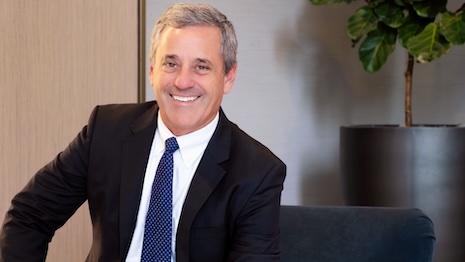By Ian Lifshitz
There is a growing focus in the packaging industry on producing environmentally sustainable products. Increasingly, consumers and retailers are demanding the items they purchase have as little impact on the environment as possible. Ultimately, this means that packaging is sourced and made from more sustainable materials – and less packaging, in general.
For everyday packaging needs, this can be a challenge, even more so when it comes to expensive, luxury goods.
Prestige brands and their customers have sometimes been regarded as more concerned about the appearance than about eco-friendliness, despite the shift toward sustainable packaging.
While people may be more environmentally conscious, they still expect packaging to be impressive when they are buying a “luxury” item.
Is it possible for the packaging industry to create sustainable luxury packaging?
From cosmetics to confectionary, the entire basis of these products is centered on multi-material packaging that contributes to the overall feeling of “luxury.”
Therefore, much of this type of packaging includes metallized plastic, metallized glass and many other types of materials which, while connoting quality and expense, are very difficult to recycle, and can have a high environmental impact during sourcing and production.
Ways to combine luxury and sustainability
With these issues in mind, a number of manufacturers are actively developing more sustainable solutions for the luxury market segment.
As a result, there are a number of simple ways for manufacturers to satisfy both the demands of “luxurious” and “sustainable.”
This can include using fewer ink colors or focusing on the weight and whiteness levels of the board to support standout design.
In addition, minimalistic high-quality packaging can be used to convey the required luxury effect. We see this in the food and drink sector, especially with high-end products often adopting a natural feel, which emphasizes the source of the food within.
Los Angeles-based Hnina Inc. is a good example with its gourmet vegan chocolate packaging that is made from 100 percent recycled and biodegradable kraft paperboard manufactured with wind energy, all while showcasing a luxurious look.
You no longer have the tradeoff between high-end luxury packaging and meeting the demands of a consumers that is more concerned about the environmental effect of the product’s packaging.
Challenges facing luxury packaging
Of course, the solution is not always as straightforward as a simplified design with high-end materials. Luxury food and drink packaging represents its own challenge.
The packaging materials that can be used are limited to ensure freshness and to comply with health and safety requirements, while also finding a balance between underpackaging and overpackaging.
Underpackaging can result in more food waste, while overpackaging is more resource intensive. Getting the balance wrong either way will have a negative effect on the environment.
The key here lies in innovation of the materials that can be used and finding more sustainable ways to develop them.
Solutions to ensure sustainable and luxurious packaging
Many companies are taking measures to make their entire manufacturing process more sustainable.
By using fewer resources and less energy to produce packaging, they can effectively do more with less. Reducing the environmental impact and meeting the demand of a growing environmental consumer consciousness is a move in the right direction.
It is certainly possible to make luxury packaging more sustainable by reducing the amount of packaging materials where possible, using the most visually appealing, high-quality recyclable materials such as paper, paperboard and metals, and exploring opportunities to make the manufacturing process more energy efficient.
OVER TIME, we may come to see “luxury” packaging as that which focuses on efficient use of packaging, chooses materials that are lightweight, sustainably sourced, recyclable and, when combined with great design, offer good product protection, transport efficiency and shelf appeal.
In some cases, getting there will be a much easier process than others, but often the answer lies in not over-complicating the process, but in thinking outside the traditional box, so to speak.
Ian Lifshitz is Toronto-based North American director of sustainability and stakeholder relations at Asia Pulp and Paper Group, the world's second-largest pulp and paper company. Reach him at ian@appcanada.com.
";
}
$token = ld16_get_token($post->ID);
$encrypted = ld16_encrypt($encrypted, $token);
print $encrypted;
?>


 Research, insights and analysis for CMOs, brands and retailers
Research, insights and analysis for CMOs, brands and retailers









